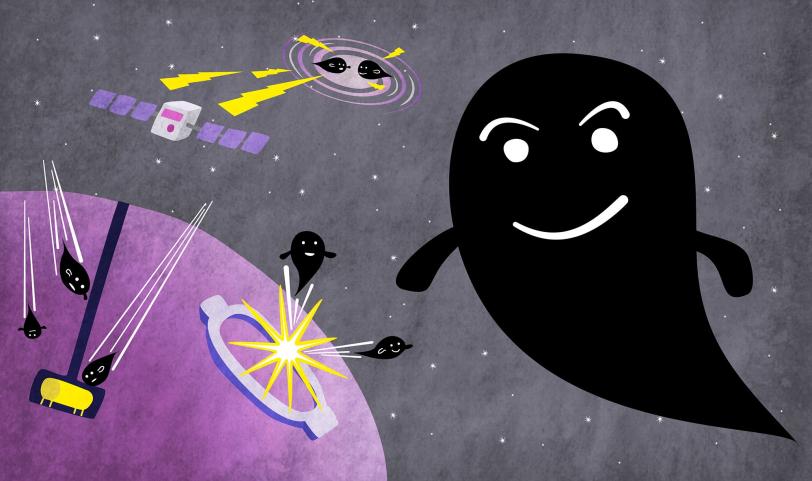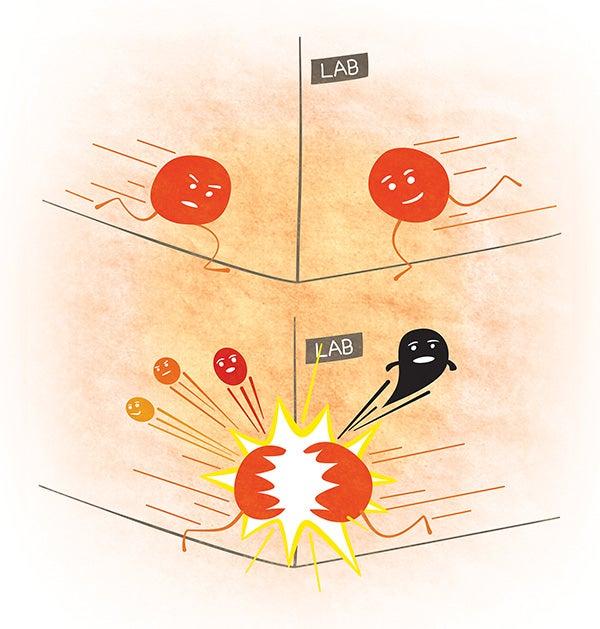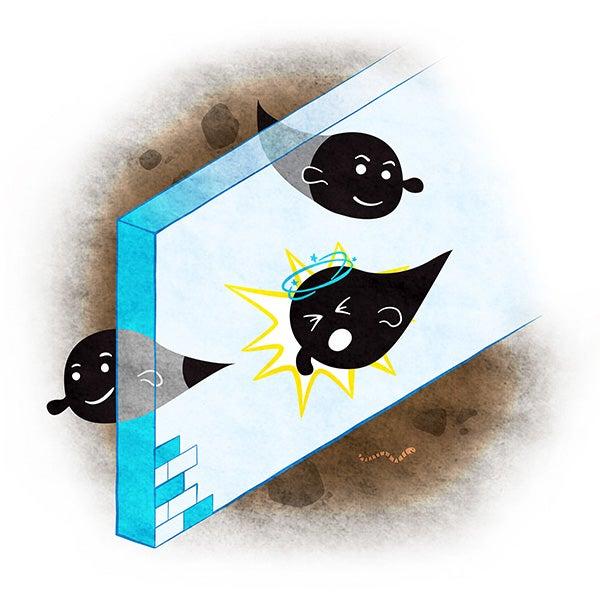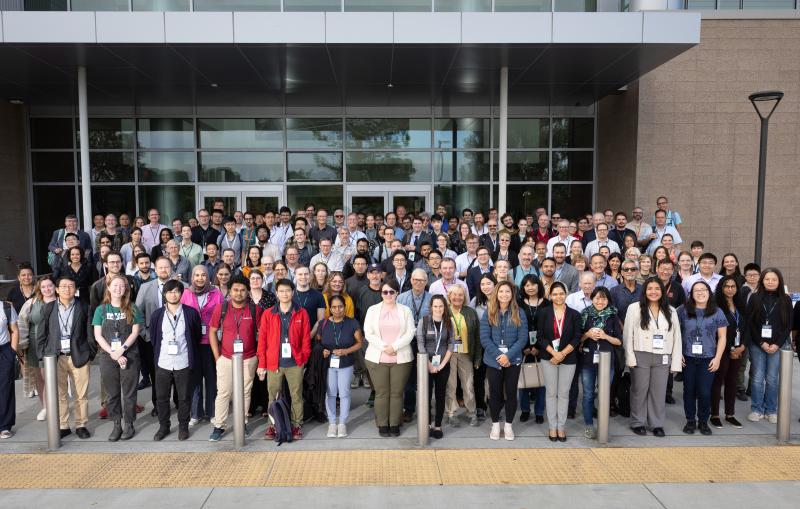Three Ways to Bust Ghostly Dark Matter
Dark matter hunters around the world pursue three approaches to look for fingerprints of ghostly WIMPs: on the Earth’s surface, underground and in space.

The world we see is embedded in an invisible cosmic web of dark matter – a ghostly form of matter that doesn’t emit light and rarely bumps into things. Although no one has ever directly observed the mysterious substance, scientists have seen signs of its existence because its gravity pulls on ordinary matter – the stuff we’re made of. In fact, it seems to be the scaffolding on which galaxies are built. Without dark matter, which is five times more prevalent than normal matter, the universe would look quite different: neither we nor our Milky Way would be around today.
Researchers’ best guess is that dark matter, just like normal matter, is made of fundamental particles. Popular candidates for dark matter particles include so-called WIMPs: weakly interacting massive particles. WIMPs are thought to interact with other matter so rarely that billions of them may fly through our bodies every second without us noticing.
Dark matter hunters around the world pursue three approaches to look for fingerprints of ghostly WIMPs: on the Earth’s surface, underground and in space.

1. Encounters in the Lab
Particle accelerators are one way of searching for dark matter particles. In these high-speed racetracks, particles of regular matter gain tremendous amounts of energy and then release it in small but violent particle crashes, potentially creating exotic new particles related to dark matter.
SLAC researchers participate in two different collision experiments that search for dark matter. They take part in the ATLAS experiment, which uses the world’s most powerful particle smasher, the Large Hadron Collider at CERN in Europe, to try to create dark matter particles. They also search for signs of a “dark force” between dark matter particles with the Heavy Photon Search experiment at Jefferson Lab in Virginia.

2. Going Bump Underground
Although dark matter particles don’t like interacting much with our visible world, scientists hope to catch a glimpse of them when they do occasionally bump into normal matter. This search requires extremely sensitive detectors located thousands of feet below the Earth’s surface, where they are protected from blizzards of unwanted signals from other particles.
SLAC’s dark matter hunters are involved in four underground experiments: SuperCDMS in Minnesota; its planned successor experiment, SuperCDMS-SNOLAB in Canada; LUX and the future LUX-ZEPLIN in South Dakota.

3. Tracing Knockouts in Space
A third way of learning more about dark matter particles is to watch out for their traces in space. If two WIMPs collide in space, they could knock each other out by annihilating one another. When they do this, they can send out gamma rays – the most energetic form of light.
With the Fermi Gamma-ray Space Telescope, a spacecraft orbiting above Earth’s atmosphere at an altitude of 350 miles, SLAC scientists and others search for such signals coming from regions known to be rich in dark matter, including the center of our Milky Way and its tiny companion galaxies.
A printable version of this feature is available as a pdf.
For questions or comments, contact the SLAC Office of Communications at communications@slac.stanford.edu.
SLAC is a multi-program laboratory exploring frontier questions in photon science, astrophysics, particle physics and accelerator research. Located in Menlo Park, Calif., SLAC is operated by Stanford University for the U.S. Department of Energy's Office of Science.
SLAC National Accelerator Laboratory is supported by the Office of Science of the U.S. Department of Energy. The Office of Science is the single largest supporter of basic research in the physical sciences in the United States, and is working to address some of the most pressing challenges of our time. For more information, please visit science.energy.gov.





